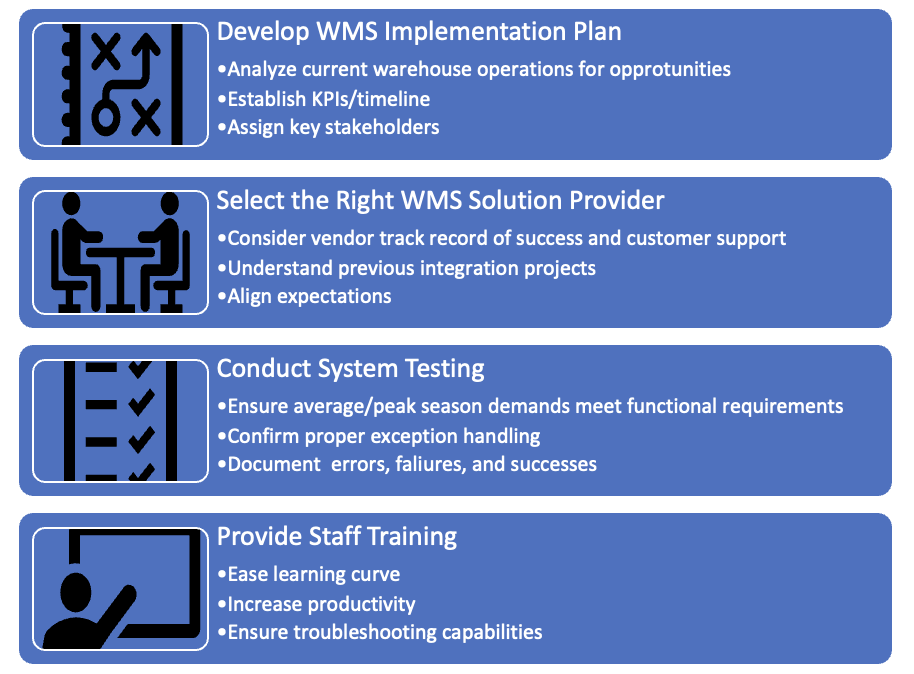
With growing demand for quick and accurate order fulfillment, many warehouse managers are turning to warehouse management systems (WMS) to maximize their customer service without sacrificing productivity, and indeed vice-versa. However, many warehouse managers cringe at the thought of implementing a WMS due to potential downtime due to operational disruption, the risk of change without appropriately planned change management, and the need to devote resources to the change in WMS applications that may be need to continue to run the day to day operation. Underestimating the challenges of implementing a WMS can lead to false expectations and disappointment. The most common challenges include the following:

So, why do so many WMS implementations fail?
Oftentimes, WMS implementations run over budget or fail to meet initial expectations. Scheduling unrealistic deadlines and failure to involve key people who will be impacted by the WMS implementation can be a recipe for disaster. During a WMS implementation, poor project planning can directly impact the budget. To control implementation costs, create a realistic implementation plan, timeline, and budget.
For businesses with limited complexity in their operations, it would be more beneficial to select a WMS with the off-the-shelf capabilities required by the operation already present in the application in order to avoid customizations. For larger or more complex businesses that require atypical or unique software applications or functionality, a customized WMS may be required to meet business needs. An off-the-shelf WMS solution may not allow integration capabilities with certain enterprise resource planning (ERP) platforms, transportation management systems (TMS), yard management systems (YMS), etc. resulting in limited visibility throughout the supply chain. The integration architecture and functionality should be exclusively matched to your business needs. Ensure data accuracy and consistency by addressing any legacy application issues. Most WMS solutions require a reliable high speed Wi-Fi or RF infrastructure. Poor coverage in a facility can cause latency issues, data loss, and other communication disruptions that directly impact WMS functionality.
WMS implementation challenges can appear to be overwhelming, however, some best practices can help alleviate some stress. These include:

Logistics organizations understand the competitive advantage of digitizing supply chain operations. With the variety of available WMS options, choosing the right WMS to meet your specific needs can be troublesome. The problem is that a WMS is not one size fits all proposition. Every warehouse has its own unique obstacles and requirements.
Implementing a WMS can be a challenging process, but with the right consultant or team in place, these challenges can be mitigated. A WMS consultant can help identify the most appropriate software vendors and narrow down selections to make the final decision. Once a vendor is selected, a consultant can act as a project manager to ensure a seamless implementation and deployment strategy. In the initial stage, project kick-off, the consultant gathers and documents operational processes and objectives. Then the consultant collaborates with the selected software vendor to design the solution and ensure system configuration integrity until the go-live. WMS implementations are costly and are often coupled with challenges. Engaging the right team of experts can provide end-to-end WMS consulting services to ensure implementation success.
—Ashley Rhodes, St. Onge Company